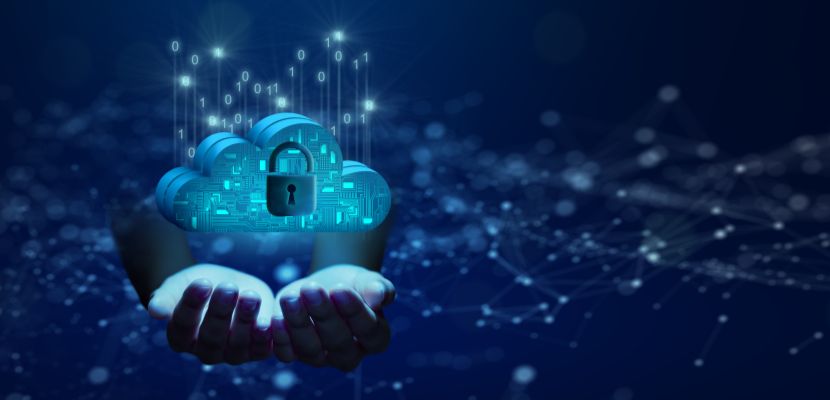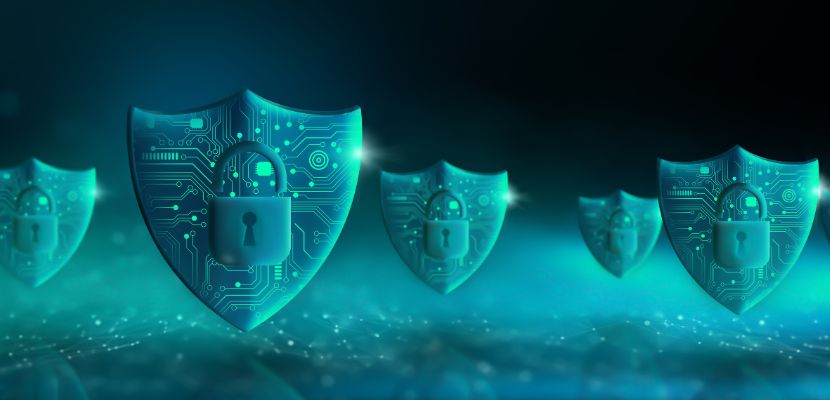The Internet of Things (IoT) refers to a network of interconnected physical devices that collect and exchange data over the internet.

What Is Meant by the Internet of Things?
The Internet of Things is a technological concept that describes a system where physical objects are embedded with sensors, software, and network connectivity, allowing them to collect and exchange data with other connected devices and systems over the internet. This interconnected environment enables devices to communicate autonomously, gather real-time information from their surroundings, and perform actions based on that data without requiring direct human input.
IoT extends beyond traditional computing devices, integrating everyday objects such as appliances, vehicles, industrial equipment, and wearable technology into the digital world. The goal of IoT is to enhance efficiency, improve decision-making, and create new opportunities for automation and innovation by turning passive objects into active participants in digital ecosystems.
Key Components of IoT
The Internet of Things relies on several key components that work together to enable seamless communication, data collection, and analysis across connected devices. Each component plays a vital role in ensuring that IoT systems function efficiently, securely, and effectively to deliver actionable insights and automation.
1. Devices/Sensors
Devices and sensors are the physical objects in an IoT system responsible for collecting data from the environment. These can include anything from temperature sensors and GPS trackers to smart appliances and industrial machines. They capture data such as temperature, humidity, motion, or location, forming the foundation of the IoT ecosystem.
2. Connectivity
Connectivity enables the devices to communicate with other devices and systems over the internet or other networks. Common communication methods include Wi-Fi, Bluetooth, cellular networks, LPWAN (low-power wide-area network), and satellite connections. Reliable connectivity ensures that data flows seamlessly from devices to the cloud or local servers for processing.
3. Data Processing
Once the data is collected and transmitted, it needs to be processed to extract meaningful insights. This can occur on the cloud, at the edge (closer to the devices), or on dedicated servers. Data processing involves filtering, analyzing, and transforming raw data into actionable information.
4. User Interface
The user interface allows people to interact with the IoT system. It could be a mobile app, a web dashboard, or another type of software interface. Through this interface, users can monitor device status, analyze data, configure settings, and make informed decisions based on the insights provided.
5. Cloud or Edge Computing
Cloud platforms provide the storage, computing power, and services needed to handle vast amounts of data generated by IoT devices. Alternatively, edge computing brings processing capabilities closer to the devices themselves, reducing latency and bandwidth usage by handling data locally when possible.
6. Security
Security is a critical component of any IoT system. It involves protecting devices, networks, and data from unauthorized access, breaches, and cyber attacks. Security measures include encryption, authentication protocols, secure firmware, and regular updates to ensure the integrity and confidentiality of the IoT ecosystem.
How Does IoT Work?

IoT works by connecting physical devices equipped with sensors, software, and network capabilities to the internet, allowing them to collect, share, and analyze data. These devices continuously gather information from their environment and transmit it through a communication network to centralized platforms, such as cloud servers or edge computing systems. The data is then processed and analyzed to generate insights, trigger automated actions, or inform users via dashboards or applications.
Through this cycle of data collection, transmission, processing, and response, IoT enables real-time monitoring, control, and optimization of various processes across industries, homes, and cities.
What Technologies Make IoT Possible?
Several key technological advancements enable the Internet of Things by providing the critical infrastructure required for device connectivity, data processing, and automation.
At the core of IoT are low-cost, energy-efficient sensors and actuators that collect precise data from physical environments, including temperature, humidity, motion, light, and pressure. These devices translate real-world conditions into digital signals, forming the foundation for intelligent monitoring and control systems.
Advancements in wireless communication technologies make reliable device connectivity possible, even in remote or industrial environments. These technologies include:
- Wi-Fi for high-bandwidth, short-to-medium range communication.
- Bluetooth and BLE (Bluetooth Low Energy) for close-range, low-power connections.
- 4G/5G cellular networks for high-speed, wide-area connectivity.
- LPWAN (Low-Power Wide-Area Networks) technologies like LoRaWAN and NB-IoT, which enable long-range, low-bandwidth communication with minimal energy consumption, ideal for large-scale sensor deployments.
The rise of cloud computing platforms such as AWS IoT, Microsoft Azure IoT, and Google Cloud IoT has been instrumental in enabling IoT at scale. These platforms provide the infrastructure for ingesting, storing, and processing the massive volumes of data generated by IoT devices, as well as tools for device management, orchestration, and analytics.
Edge computing complements cloud infrastructure by processing data locally, near the source of data generation. This reduces latency, minimizes bandwidth consumption, and enables real-time decision-making for applications like industrial automation, autonomous vehicles, and healthcare monitoring.
Machine learning (ML) and advanced data analytics play a crucial role in extracting actionable insights from complex and often unstructured IoT data. Predictive maintenance, anomaly detection, and adaptive optimization are common applications that leverage AI to enhance the value of IoT systems.
Finally, security technologies are critical to safeguarding IoT ecosystems. These include device authentication protocols, encryption for data in transit and at rest, secure boot mechanisms, and specialized IoT security frameworks that address vulnerabilities inherent to connected devices. Advances in zero-trust architectures and identity-based security models further protect IoT devices, networks, and data from evolving cyber threats.
Internet of Things Examples
Here are a few examples of how the IoT is used in practice:
- Smart homes. Devices like smart thermostats, security cameras, smart lights, and voice assistants (e.g., Alexa, Google Home) automate and optimize home environments for comfort, security, and energy efficiency.
- Wearable technology. Fitness trackers and smartwatches monitor health metrics such as heart rate, activity levels, and sleep patterns, providing users with real-time health insights.
- Industrial IoT (IIoT). Manufacturing equipment equipped with sensors can monitor performance, detect anomalies, and enable predictive maintenance to reduce downtime and improve efficiency.
- Connected vehicles. Modern cars use IoT for navigation, diagnostics, remote monitoring, and safety features like collision detection and automated emergency assistance.
- Healthcare devices. Remote patient monitoring tools collect and transmit health data to medical providers, enabling continuous care and early intervention without requiring frequent hospital visits.
Advantages of IoT
The Internet of Things offers numerous benefits across industries and everyday life by enabling smarter, more efficient, and more connected environments. These advantages drive innovation, improve operational efficiency, and enhance user experiences. They include:
- Automation and efficiency. IoT enables devices to communicate and perform tasks without human intervention, streamlining processes and increasing operational efficiency. Automated systems reduce manual labor, minimize errors, and optimize resource use.
- Data-driven insights. IoT devices collect large volumes of data that can be analyzed to reveal patterns, trends, and opportunities for improvement. These insights help organizations make informed decisions, predict outcomes, and refine strategies.
- Cost savings. Through real-time monitoring and predictive maintenance, IoT helps reduce downtime, prevent costly failures, and extend the lifespan of equipment. Improved efficiency and resource optimization also contribute to lower operational costs.
- Enhanced convenience and quality of life. IoT enhances daily life through smart home technologies, wearable health devices, and connected appliances that offer greater control, personalization, and convenience to users.
- Improved safety and security. IoT solutions monitor environments for potential risks, such as equipment failures or security breaches, and provide timely alerts or automatic responses. This enhances safety in industries, public spaces, and homes.
- Better resource management. IoT supports sustainable practices by monitoring and optimizing energy usage, water consumption, and waste management. This leads to more responsible and efficient resource utilization.
Disadvantages of IoT
While IoT offers numerous benefits, it also comes with several challenges and drawbacks that organizations and individuals must consider. These disadvantages primarily relate to security, complexity, and data management. They include:
- Security risks. IoT devices often have vulnerabilities that can be exploited by cybercriminals, leading to data breaches, unauthorized access, and even control over critical systems. Inadequate security measures, outdated firmware, and lack of standardization make these devices frequent targets for attacks.
- Privacy concerns. IoT devices collect vast amounts of data, often including sensitive personal or organizational information. Without robust privacy protections, this data can be exposed, shared without consent, or misused, raising significant ethical and legal concerns.
- Complexity and integration challenges. Managing a large network of interconnected devices can be complex. Ensuring compatibility between different manufacturers, maintaining devices, and integrating them into existing IT systems require significant effort, technical expertise, and resources.
- High implementation and maintenance costs. Although the cost of individual sensors and devices has decreased, implementing an enterprise-scale IoT solution can still be expensive. Costs include infrastructure, connectivity, cloud services, security, and ongoing maintenance.
- Data overload and management. IoT generates vast volumes of data, which can overwhelm systems if not properly managed. Organizations need robust data storage, processing, and analytics capabilities to extract meaningful insights and avoid inefficiencies.
- Reliability and downtime risks. IoT systems rely heavily on consistent connectivity and power. Any network outage, device failure, or software bug can disrupt operations, potentially leading to safety risks or financial loss, particularly in critical sectors like healthcare or manufacturing.
What Is the Future of the Internet of Things?

The future of the IoT points toward deeper integration into both everyday life and industrial processes, driven by advancements in connectivity, artificial intelligence, and automation.
As 5G and other high-speed networks become more widespread, IoT devices will communicate faster and more reliably, enabling real-time data processing on a much larger scale. Edge computing will complement this growth by bringing processing power closer to the devices themselves, reducing latency and bandwidth usage.
In the coming years, IoT is expected to play a central role in the development of smart cities, connected healthcare, and autonomous systems, improving efficiency, sustainability, and quality of life. Industrial IoT will further transform manufacturing, logistics, and energy management through predictive maintenance, resource optimization, and enhanced automation. Additionally, as AI becomes more sophisticated, IoT devices will evolve from passive data collectors into intelligent systems capable of making autonomous decisions.
At the same time, the future of IoT will demand stronger standards for security, privacy, and interoperability as the number of connected devices continues to grow exponentially. Regulations and best practices will likely emerge to address these challenges, shaping a more secure and reliable IoT landscape.